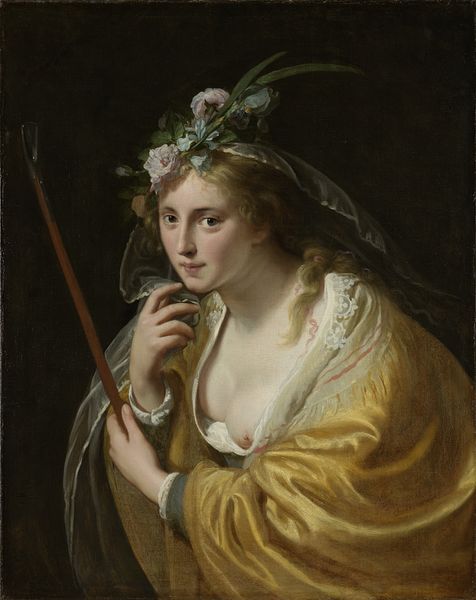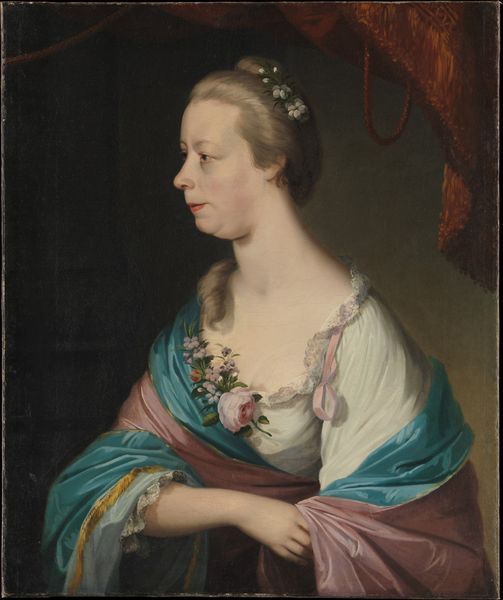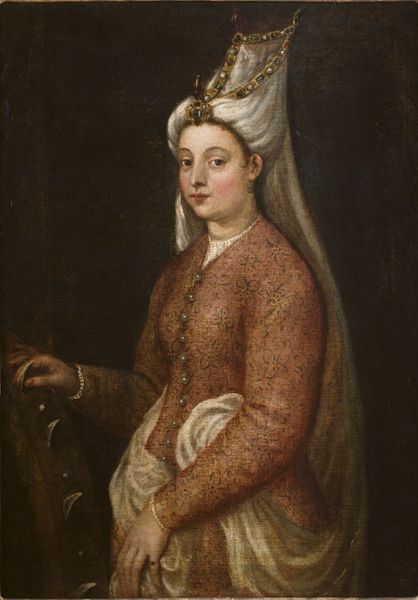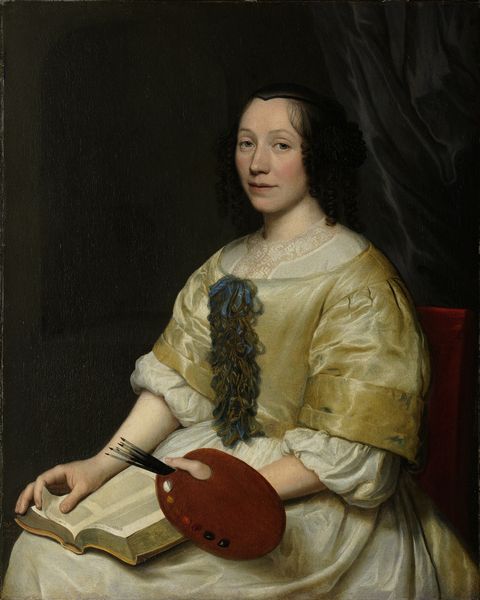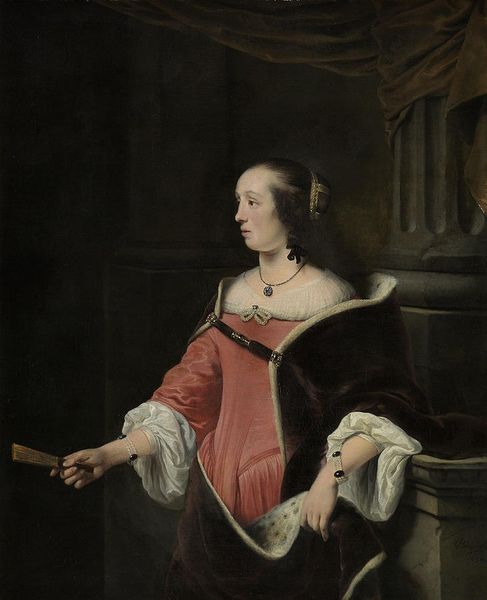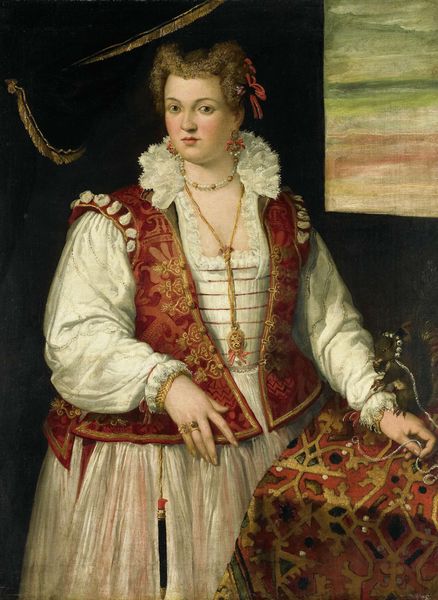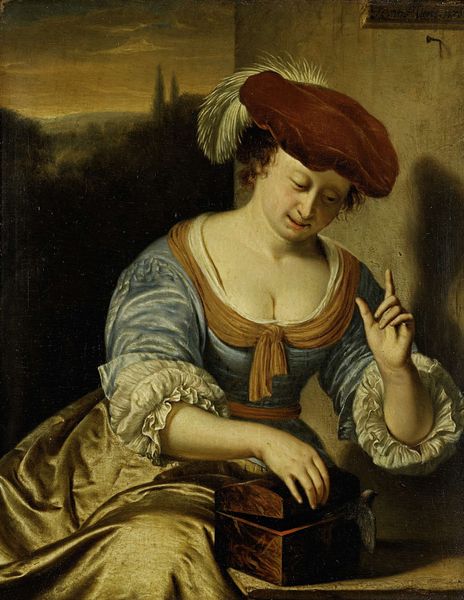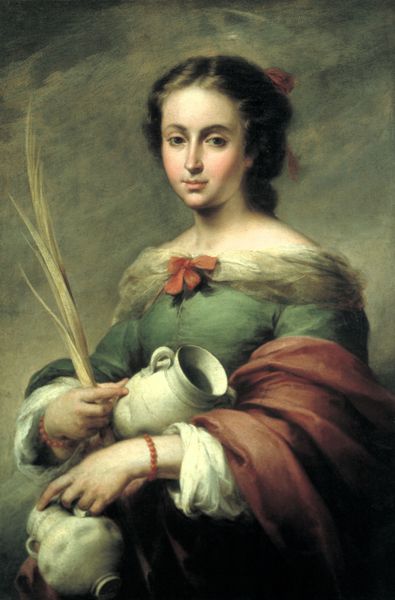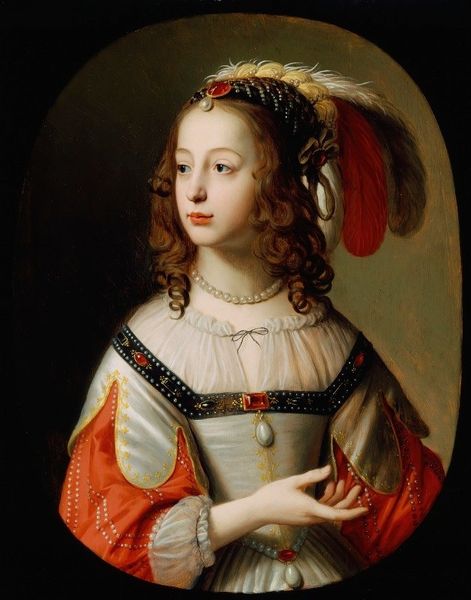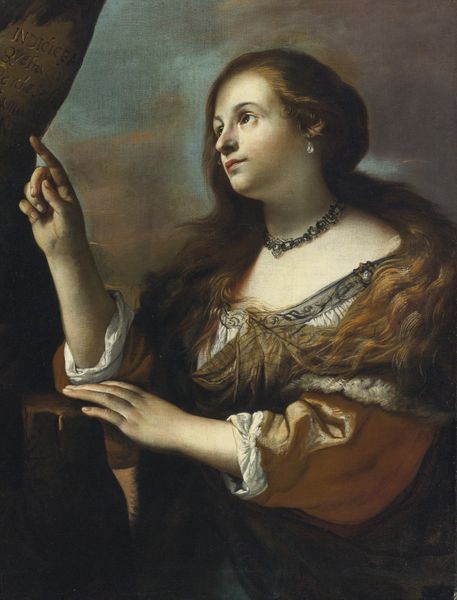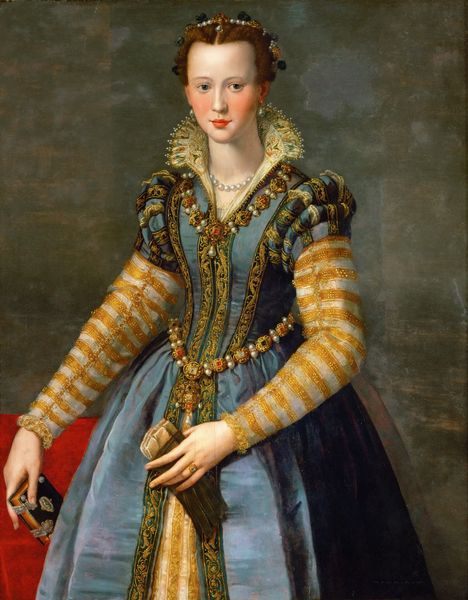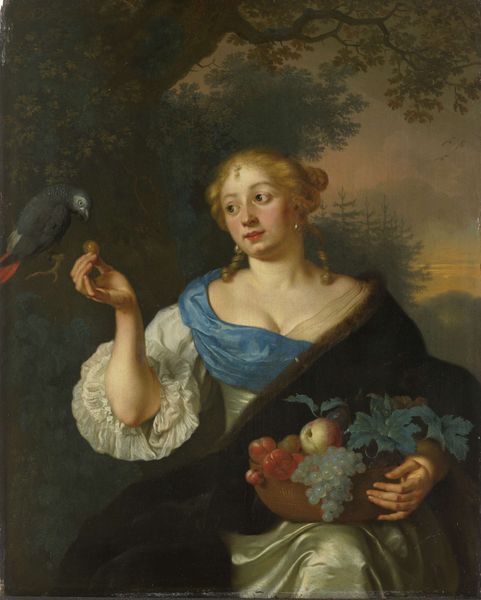
#
character portrait
#
portrait reference
#
portrait head and shoulder
#
animal portrait
#
animal drawing portrait
#
portrait drawing
#
facial portrait
#
portrait art
#
fine art portrait
#
digital portrait
Dimensions: overall: 104.14 × 77 cm (41 × 30 5/16 in.) framed: 133.7 x 106 x 8.9 cm (52 5/8 x 41 3/4 x 3 1/2 in.)
Copyright: National Gallery of Art: CC0 1.0
Curator: I find her stillness rather unsettling. It is serene, but those eyes on the platter give me pause. Editor: That's certainly understandable. Let's contextualize. We're looking at "Saint Lucy" painted circa 1625-1630 by Francisco de Zurbarán, the Spanish Golden Age master known for his profoundly evocative religious scenes. It's worth thinking about what images like this communicated within the Catholic Church, particularly as visual rhetoric and its intersection with hagiography. Curator: The choice of objects seems significant. The palm frond represents victory, so she's clearly being depicted post-martyrdom. However, I struggle with what the eyes symbolize in this portrait. Are they Lucy's own eyes? Is she offering them as a symbol of her unwavering faith? Editor: According to her traditional biography, Saint Lucy was persecuted for her Christian faith; her eyes were gouged out by her persecutors. Later accounts report that she miraculously regained her sight, which only reinforced her saintly power. The painting invites us to consider themes of faith, sacrifice, and the construction of female sainthood in a patriarchal society. What does it mean to portray a woman defined by her suffering and resilience? Curator: Considering the patronage during the Counter-Reformation, how was Zurbarán able to capture something akin to authentic piety instead of simply presenting a glorified image? The realism is almost unsettling. She seems like a real person playing a role in a theatrical drama. Editor: Absolutely, it is not a superficial rendering. I think this depiction attempts to solidify and amplify Lucy’s relevance for the faithful. Zurbarán painted during a period ripe with calls to re-examine art's didactic and propagandistic capacities. These saints reminded people what they were aspiring towards. And her serenity seems meant to both inspire and console. She has gone through immense pain and yet she is whole, haloed, at peace, her feast a continued reminder of spiritual victory every year. Curator: That definitely reframes my initial reaction. The artist isn't shying away from showing her suffering. And even today, there’s a visceral effect in looking at the image. Editor: Indeed. Today, engaging with her image compels us to confront uncomfortable aspects of the saint's identity within the legacies of patriarchy. Curator: Ultimately, she remains a powerful symbol across centuries, her story continuing to resonate in complex ways.
Comments
No comments
Be the first to comment and join the conversation on the ultimate creative platform.
